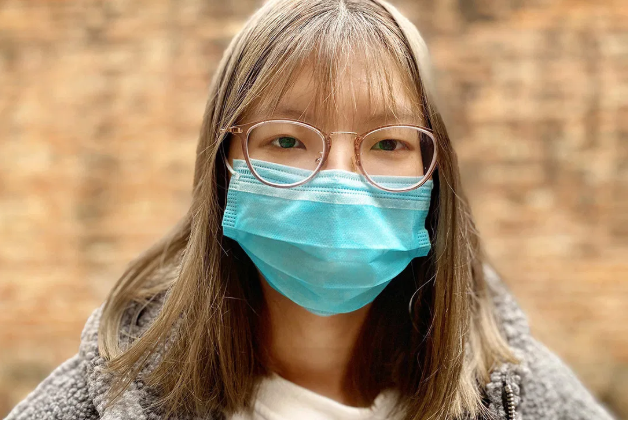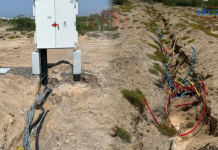- After being criticized for a slow response to SARS, China is once again facing global scrutiny for its handling of the new coronavirus outbreak.
- By the time the global SARS outbreak was contained, the virus spread to over 8,000 people worldwide and killed almost 800.
- Experts warn something similar may happen with the new coronavirus outbreak.
It’s been 17 years since a respiratory virus called severe acute respiratory syndrome (SARS) appeared in China.
Within months, SARS spread to more than two dozen countries in Europe, North America, South America, and Asia.
By the time the global outbreak was contained, the virus had spread to over 8,000 people worldwide and killed almost 800.
At the time, Chinese government was criticizedTrusted Source for responding slowly to the outbreak and concealing the seriousness of the illness.
Now, a new respiratory illness has emerged in China. Like SARS, it’s caused by a coronavirus, this one known as 2019-nCoVTrusted Source.
This new virus causes symptomsTrusted Source such as fever, cough, and shortness of breath. There’s no specific antiviral treatment or vaccine for it.
As of Sunday Jan. 26, the World Health OrganizationTrusted Source reported that the new coronavirus has killed at least 56 people in China, with over 2,000 confirmed cases worldwide. This includes 5 confirmed casesTrusted Source in the United States.
The Centers for Disease Control and Prevention (CDC) said the risk to Americans from the new coronavirus is low at this time, but they’re monitoring the situation.
As the outbreak grows, the Chinese government is once again facing global scrutiny for its actions.
Chinese officials have already responded to the outbreak by quarantining millions of people in affected cities and restricting domestic and international travel.
But some experts are questioning whether China — and the rest of the world — has fully learned the lessons from the 2003 SARS outbreak.
China’s initial response to SARS was plagued by a “fatal period of hesitation regarding information sharing and action,” according to a 2004 reportTrusted Source on its handling of the outbreak.
It took several months before the Chinese government started sharing information with the World Health Organization.
During that time, the Chinese public was kept largely in the dark about the new illness, which the 2004 report said “heightened anxieties, fear, and widespread speculation.”
Some experts say that this time around, Chinese officials were once again reluctant to share information during the early stages of the current outbreak, which hampered global recognition of the threat.
For weeks, local officials in Wuhan — where the virus first appeared — downplayed the seriousness of the threat, reporting that people with the infection had contracted it through exposure to live animals at a market.
But as cases of human-to-human transmission started appearing, the seriousness of the outbreak became more clear.
Still, there are signs that Chinese officials are trying to avoid repeating the mistakes of SARS.
“With the recent outbreak, I think the Chinese government has been much more willing to share information and be open. In fact, the head of WHO has been praising them for their willingness to share,” said Anne W. Rimoin, PhD, MPH, an epidemiologist and director of the UCLA Center for Global and Immigrant Health.
However, even with this greater transparency, some news outlets report that the Chinese government continues to censor unfavorable news about the outbreak, including on social media.
Dr. Arnold S. Monto, an epidemiologist in the University of Michigan’s School of Public Health agrees that China’s initial response was slow, but he said some of this is due to what happens when dealing with a large bureaucracy.
For example, some hospitals lacked testing kits for the virus. Also, case reports from local hospitals had to be reviewed by China’s central health commission before being made public.
One of the biggest changes since SARS is advances in technology needed to understand the virus and develop diagnostic tests or treatments.
Chinese scientists have already sequenced the virus, which first appeared in December. They’ve also made that information available to scientists around the world.
With SARS, it took scientists about 5 months to identify the virus after it began to spread.
“Having information quickly really helps public health officials start to contain it,” said Rimoin. “So the ability to rapidly identify viruses — and identify that you have a new virus — is an extraordinary and important new development.”
Genetic information about the virus is needed to help scientists develop diagnostic tests for the virus, as well as treatments and vaccines.
Scientists at the U.S. National Institutes of Health are already working on a vaccineTrusted Source for the new virus. However, even with faster vaccine development compared to 17 years ago, it could still be months before a vaccine is ready for widespread use in people.
Monto said that during SARS there was no good diagnostic test until very late in the outbreak. Instead, doctors relied on symptoms to diagnose people.
“The case definition [with SARS] was basically a lower respiratory infection and a traveler from an infected area,” said Monto.
This approach is lot less clear than a diagnostic test. Monto said this case definition was also less useful inside China, where many people were coming from a SARS area.
Several laboratory tests for the new coronavirusTrusted Source have already been developed, or are under development. Some are specific for 2019-nCoV while others also pick up other types of coronavirus.
New genetic technologies will be a game changer for how China and other countries handle the new coronavirus.
But Rimoin said “even with all of these new technologies available, it’s going to come down to good disease surveillance, good case identification, and good contact tracing.”
Dr. Anthony S. Fauci, director of the U.S. National Institute of Allergy and Infectious Diseases, and his colleagues, said in a JAMA editorialTrusted Source that it was these kinds of “classic public health measures” that brought the SARS epidemic to an end.
Chinese officials have already implemented many of these, including quarantining Wuhan and other cities. The current travel restrictions in China are much more drastic than they were during SARS.
Monto suspects that China is enacting wider travel restrictions than they did during SARS because they’re concerned about infected people without symptoms spreading the virus.
“There were a lot of studies about travel restrictions during SARS,” said Monto, “and it’s very clear that just restricting the travel of people who are visibly sick from the infected areas didn’t work.”
China’s health minister Ma Xiaowei announced on Sunday that people can spread the new coronavirus for up to 2 weeks before they have symptoms. This will make it more difficult for health officials to contain the spread of the virus.
Other countries are taking steps to slow the spread of cases that show up within their borders.
In the United States, several airports are screening passengers coming from Wuhan. Health officials are also tracking people who may have come into contact with people who have tested positive for the virus.
Although the United States had 8 SARS cases in 2003, the real wakeup call for public health officials came in 2014 during the Ebola outbreak.
That year, a Liberian man with Ebola showed up at a Dallas emergency room with a high fever and abdominal pain. He was initially sent home with a diagnosis of a sinus infection before returning to the hospital. He died 2 weeks later. Two nurses who took care of him were also infected with the virus.
The Ebola outbreak “tested [U.S.] hospitals’ ability to prepare and respond to emerging public health infectious disease outbreaks,” said Rita D’Aoust, PhD, associate dean for teaching and learning at Johns Hopkins School of Nursing.
After that, said D’Aoust, the U.S. Department of Health and Human Services developed guidelines for hospitals on how to prepare for other emerging infectious diseases.
“In addition, several federal, state, and local agencies have invested resources for training, coordinating, and conducting testing [related to infectious diseases],” she said.
There’s still a lot we don’t know about the virus, including how quickly it spreads and the severity of the illness caused by it.
But governments already touched by the outbreak are banking on strict public health measures along with new technologies to quickly contain the outbreak — the way they did during SARS.
“Nobody really predicted that SARS would not continue to be a problem,” said Monto. “But by public health measures — including isolation and proper precautions — it was possible to put the genie back in the bottle.”




